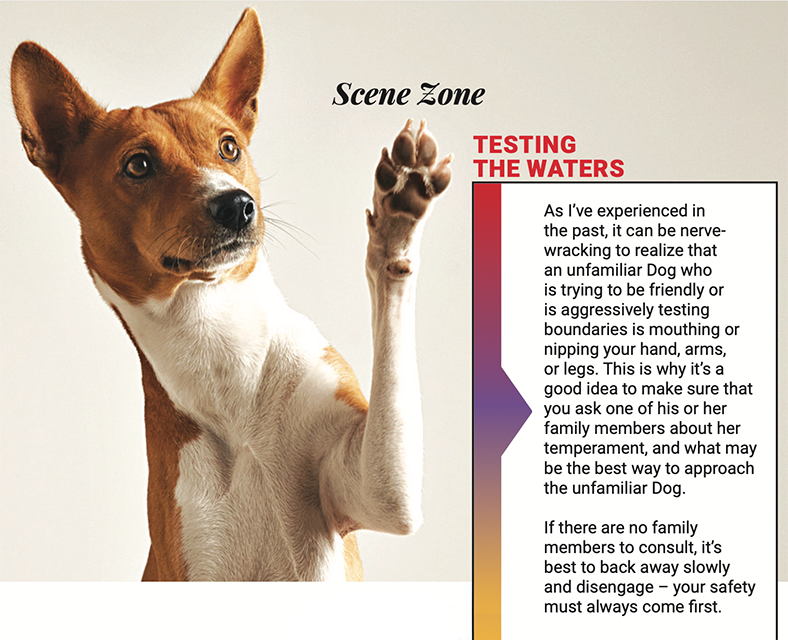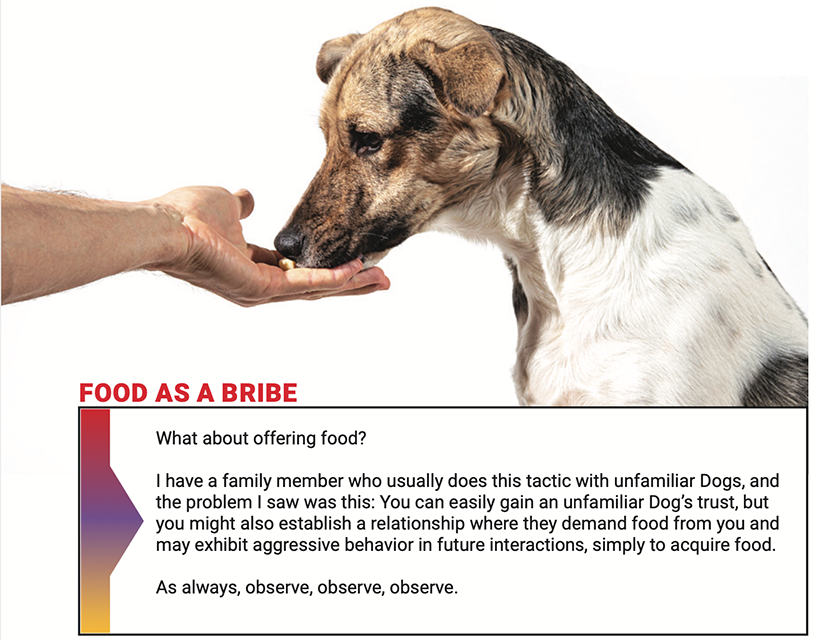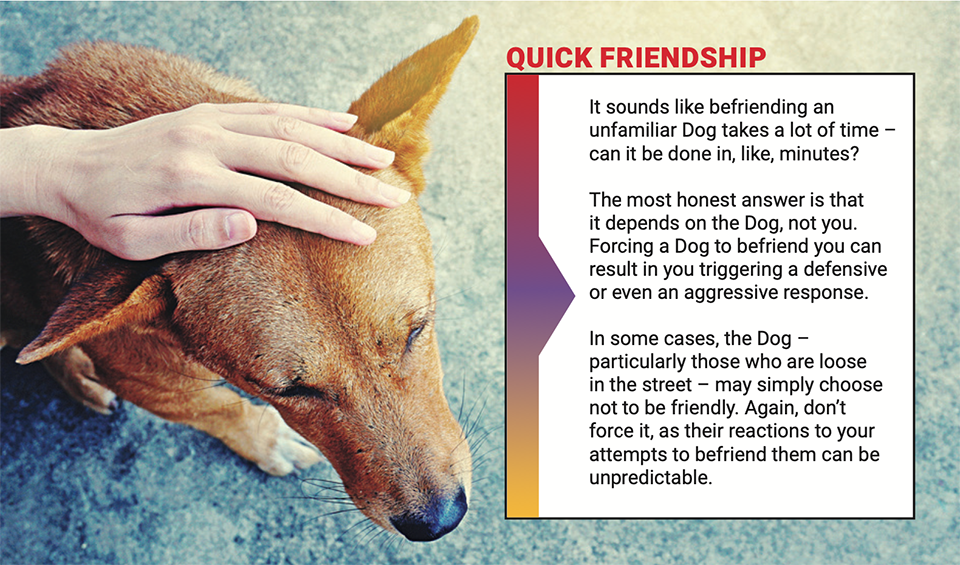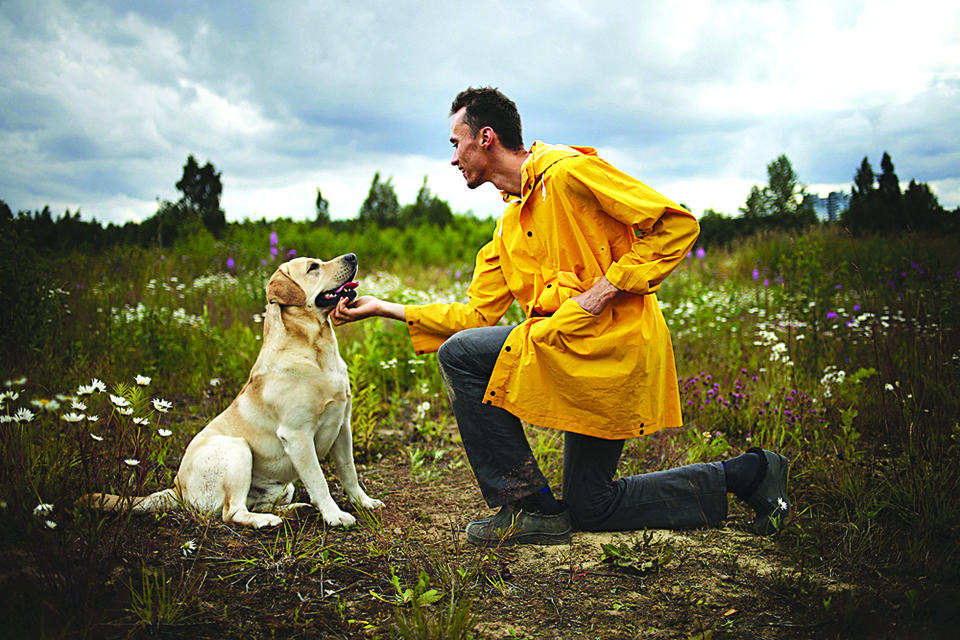Ever since my childhood, our house always had many canine companions. They were seen as both family members and as protectors. Be they Shih-Tzus or German Shepherds, they were all loved and taken care of as best as we could.
Later, we made sure that all puppies born in our household grew up with us as part of our family before we sent them to those who would love them as much as we did.
Because of my background, some people thought that I would know how to handle all sorts of Dogs, that they would naturally like me. But the truth is, having so many fur babies – up to 18, at one point – only made me more careful when it came to approaching and trying to befriend Dogs not from my family.
And that brings us to the inevitable question: If even a person who has grown up with many furry family members has a hard time approaching new canines, how exactly does one befriend a new, unfamiliar Dog?
ALWAYS ABOUT PREPARATION
The very first thing a person must do is to never approach an unfamiliar Dog as if one already has a relationship with him or her. Dogs have a different culture, so to speak, and the rules of the pack and establishment of power hierarchies are still important (in our house’s case, my mother is the undisputed alpha female – after all, she is the one who cares for all our canine family members).
If you know one of the Dog’s family members, then half your problems are solved; if they see that you are “one of the pack,” then you will eventually be welcomed as another family member, if not immediately so.
However, if you do not know who the owner is or, worse, the unfamiliar Dog is from the streets, then one should be incredibly careful.



THE FIRST TOUCH
So, let’s say that you already have become a familiar presence to the once-unfamiliar Dog. This still doesn’t mean that he or she trusts you. But curiosity will usually win, and the soon-to-be canine family member will try to find out who you are.
At this point, many things depend on the Dog’s temperament. In my experience (reinforced by visits to the animal bite clinic), if you at all feel any doubt, it’s a good idea to slowly move away until you feel safe enough to walk quickly out of range.
It is important to remember that not all canine citizens will be friendly; some will be downright hostile, no matter what.
But on the occasion that one does come forward with curiosity, it’s fine to slowly extend a hand. Do remember, though, not to extend your fingers; keep your hand in a fist. And if you do extend your arm, do not hyper-extend. Some Dogs have a habit of mouthing or nipping out of excitement or curiosity, and fingers can be easily wounded when such activities happen.
Depending on the level of training or experience being around humans, some Dogs have no problem being hugged, for example, while others will become aggressive if one does more than a pat on the head. It’s a good idea to ask one of the Dog’s family members about where your new furry friend prefers to be touched.
After a while, it should be okay to interact more with the Dog, but be cautious, even if one of the Dog’s family members is supervising your interaction.

TOO MUCH INTERACTION
Once you have befriended a once- unfamiliar Dog, you should also consider that there is such a thing as too much interaction. Some Dogs can easily become hyperactive when attention is given to them, and they may end up engaging their new friend in a bit of rough play. It’s like how puppies have mock fights.
Aside from the concerns about mouthing and nipping, if you have a large Dog becoming excited, that rough play can leave one disheveled, or even with minor scratches and bruises. It’s best to keep calm and set up boundaries even then.
IS KNEELING OKAY?
What about kneeling down to meet an unfamiliar Dog eye to eye, or bending down to greet them?
I’ve seen friendly but untrained or hyperstimulated Dogs accidentally wound people’s faces with mouthing actions, so I usually make sure
to keep my face away from possible lunges when it comes to unfamiliar Dogs.
Same with trying to hug unfamiliar Dogs – if I have issues with strangers hugging me suddenly, I can only imagine how that can make unfamiliar Dogs afraid or defensive.


ALL’S WELL THAT ENDS WELL?
In my experience, befriending an unfamiliar Dog is a gamble: The less you know about them, the more you put yourself at risk of being injured.
My personal philosophy about befriending unfamiliar Dogs is this: Unless I will be interacting with the Dog and his or her family (for example, one family member is a friend of mine) many times, I will admire only from afar, as the term goes. While the opportunity to have a new furry friend can be very rewarding, one should be careful about being too friendly.






